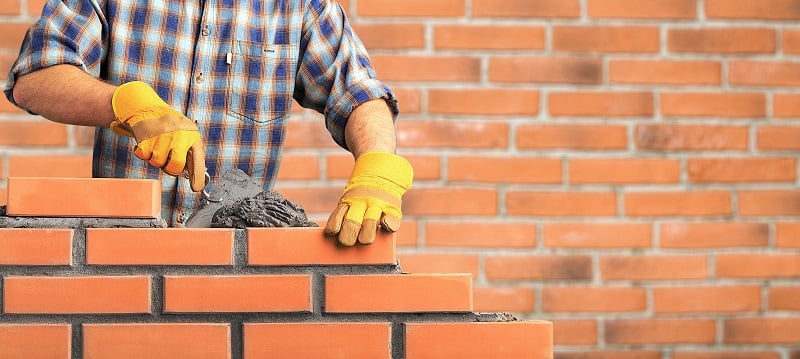Opening the Keys of Lasting Stonework Construction Practices for Eco-Friendly Structures
Among the myriad strategies to eco-friendly building, lasting masonry construction stands out as a time-tested and long lasting method that holds a wide range of untapped capacity. From the selection of materials to cutting-edge building methods, the tricks to attaining sustainability within stonework construction are complex and intriguing.
Benefits of Lasting Masonry Construction
Welcoming sustainable masonry building practices not only minimizes ecological impact but likewise uses long-lasting economic advantages to building contractors and areas. By utilizing materials like recycled bricks, obstructs, and stones, builders can substantially reduce the carbon impact of their jobs while advertising source efficiency. Additionally, sustainable masonry building and construction techniques, such as proper insulation and thermal mass residential or commercial properties, can enhance energy performance within structures, bring about lowered operational prices in time.
Additionally, the resilience and durability of masonry structures add to long-lasting economic advantages. Buildings constructed using lasting stonework techniques often require much less upkeep and fixing, converting to set you back financial savings for builders and residential property proprietors. The durability of masonry materials additionally ensures that frameworks continue to be secure and safe, minimizing the requirement for frequent renovations or substitutes.
Eco-Friendly Stonework Materials
Using eco-friendly masonry products is a critical action towards boosting the sustainability of building and construction practices and minimizing environmental effect while taking full advantage of lasting financial benefits. Sustainable stonework products are sourced, generated, and utilized in a way that minimizes overall environmental impact. Sustainable concrete blocks integrate recycled accumulations and might feature improved insulation buildings, adding to energy performance in structures.
Furthermore, natural materials like adobe, rammed earth, and straw bales provide outstanding thermal mass buildings, decreasing the need for heating and cooling power. These products are typically in your area offered, advertising regional economies and decreasing transportation-related carbon exhausts. By choosing environmentally friendly masonry materials, construction tasks can substantially minimize their environmental footprint and add to the creation of healthier, more sustainable constructed settings.
Energy-Efficient Stonework Methods
Power efficiency plays an essential duty in improving the sustainability of masonry construction practices. One vital energy-efficient stonework method is the usage of thermal mass, which includes including dense products like concrete or brick right into the structure's structure to soak up and store warmth.

Advancements in Lasting Stonework
Current developments in lasting stonework techniques have actually produced cutting-edge strategies that are improving the building and construction sector. One such innovation is the development of self-healing concrete, which utilizes bacteria installed within the concrete to recover splits autonomously. This development not just decreases maintenance costs however additionally improves the longevity of stonework structures, adding to their sustainability.
Another remarkable technology is the usage of recycled aggregates in masonry construction - masonry contractor. By integrating products such as smashed ceramic waste or recycled glass into concrete mixes, contractors can reduce the ecological influence of building jobs while maintaining architectural stability. This practice not just diverts waste from landfills yet also preserves all-natural resources, making it a key innovation in sustainable stonework building
Additionally, the assimilation jeff wyler used cars of digital layout tools, such as Structure Info Modeling (BIM), is revolutionizing the way masonry frameworks are prepared and created. BIM permits more precise computations, lowered product wastefulness, and improved energy efficiency, ultimately bring about more sustainable structure practices. These advancements jointly symbolize an encouraging future for sustainable masonry building and construction in the age of green structures.
Future Trends in Masonry Sustainability
With the cutting-edge strides made in sustainable stonework methods, the future patterns in stonework sustainability are positioned to further reinvent the construction market. One of the vital trends shaping the future of stonework sustainability is the raised integration of innovation. Developments such as Structure Details Modeling (BIM) and virtual truth simulations are being made use of to maximize masonry building processes, bring about reduced material waste and improved energy effectiveness in structures.
In addition, the development of novel sustainable materials is set to play a considerable function in boosting the eco-friendliness of masonry building and construction. masonry contractor. Advancements like self-healing concrete, recycled accumulations, and bio-based binders are obtaining grip for their capacity to minimize ecological influence while keeping architectural integrity

Verdict
Finally, sustainable masonry building and construction methods offer countless benefits for green structures. By utilizing green materials and energy-efficient techniques, masonry can add to a more lasting built setting. Advancements in lasting masonry are continually being developed to better enhance this content the ecological performance of structures. Looking in the direction of the future, the pattern of stonework sustainability is anticipated to grow, leading to more eco-friendly and energy-efficient building and construction practices in the years published here to find.